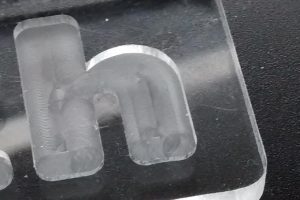
There were lots of quite reasonable led-based headlamps for bikes…
… and then it went mad…
…as powerful leds appeared and allowed small companies with cnc equipment but no optical design expertise to produce cycle lights as bright as car headlights with uncontrolled beams that are as much a menace as someone diving a car on main beam the whole time.
This bad behaviour is not limited to one global region – there are guilty manufacturers in Europe, the US and China. And a lot of these are ‘premium brand’ companies who charge hundreds of pounds/dollars/euros for their optically-trivial products.
Anyway, it looks like the cavalry is arriving from the Far East, where a few manufacturers have spent the money and designed high-power bike lights with road-user-friendly beam patterns that have plenty of light just below the horizontal, and very little light on the horizontal or above.

For example, Korean bike light maker Lightskin teamed up with Korean automotive optical design company Etendue Lighting (great name) to produce projection optics (left and top diagram) for its NacaRoad lamp.
 Which produces a 520 lumen beam with a lovely clean cut-off line (right, although I feel it is angled up a little too high for road use in this example – the company says: “install it tilted 0.7°below horizontal”).
Which produces a 520 lumen beam with a lovely clean cut-off line (right, although I feel it is angled up a little too high for road use in this example – the company says: “install it tilted 0.7°below horizontal”).
The electronics give multiple beam intensities, at least one of which meets German StVZO regulations.
 Etendue Lighting’s projection optics
Etendue Lighting’s projection optics
– apologies for the poor photo
Chinese light maker MagicShine is another company that has invested in StVZO compliant optics (although the company produces a lot of dazzling lamps as well).
Its ZX Pro light, for example, produces 350 lumens and 100 lux of StVZO-compliant beam.

MagicShine also has another light, its EVO 1700 (right) which, although not StVZO compliant, produces an 800 lumen beam with a well-defined anti-dazzle cut-off, and also has a 1,700 lumen ‘main-beam’ mode which is entered through a handlebar-mounted switch – making it a proper main-dip light just like any car.
BTW, a certain ego would like to point out that a bicycle not to far from this keyboard has been sporting a home-made main-dip light for almost 10 years….
Hats off to LightSkin, Etendue Lighting and MagicShine.
LightSkin NacaRoad (images above are from this website)
MagicShine ZX Pro and Evo 1700 main-dip
 Electronics Weekly Electronics Design & Components Tech News
Electronics Weekly Electronics Design & Components Tech News





Not sure how useful a dipping light is since most non-pro bike users seem to wobble from side to side on even the slightest gradient.
However I still prefer them to the all-black lycra, black helmet, black bike and no-lights imitation pro-cyclists that were a fad a couple of years ago.
Afternoon Mike
Nice to hear from you
What a choice:
No lights: endangering the cyclist and the poor sod who hits them
Blinding lights: protecting the cyclist and endangering everyone else
(you can see here, I am lobbying for dip beams 🙂
It’s been a bit over 20 years that we’ve had decent white LEDs (if memory serves), and while the power has increased impressively, bike lights don’t seem to have been interested in pursuing optics designs that are friendly to oncoming traffic. Well, the German standards have made this a priority, but that hasn’t made much of an impact on lights in the USA. Dynamo lights are usually compliant with the German standards, but battery powered lights typically have simple symmetric beams. I recently picked up a decent light from Light and Motion, but the beam is quite wide for use on a road. I have no doubt it will annoy other traffic. I would have sworn I had seen them announce a nice “dip” beam light about 10 years ago, but nothing like that is on their web site now. I hope these new designs become successful in the market, but I have to admit that the cycling public doesn’t seem to be demanding them (at least here in the USA).
Good morning Mr Kurt
The same is sadly true here in the UK, where folk use blinding (and often flashing-and-blinding) headlights on their bicycles without a thought for other road users 🙁
To be generous, most folks know nothing about beam patterns or what makes a beam annoying. They just buy whatever is in the store and looks bright. The folks at Light and Motion were nice enough to respond to a question of mine… “do you make any good road lights with a horizontal cutoff?”. They did point me to one that had a spot beam of 25 degrees and was labeled as one of their best mountain bike lights. No horizontal cutoff at all, and 25 degrees is far too wide for road use. I don’t know if the manufacturers of lights have tried to educate the consumer about proper road lights, or if it was just easier to sell lights with wide beams? The non-standard handlebar diameters and shapes seem to lead to the use of the rubber band light mounts, which means that the user will have trouble precisely adjusting a light with a narrow beam. Lots of possible reasons, very few good road lights on the market. 🙁
Morning Mr Kurt
Nice to hear form you.
I do hope that your generous interpretation is the correct one, but I fear ‘we make plenty of money with this one, why bother making a better one’ is also a possibility.
Is it such a shame that manufacturers that ‘do the right thing’ are not better celebrated.